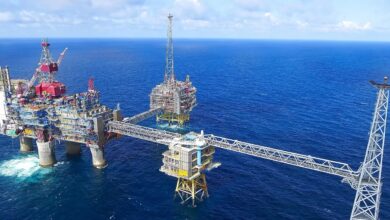Downhole reservoir network first to connect wireless sandface data to upper completion
Emerson, in partnership with Metrol, has launched the Intelligent Multistage Completion Network – an integrated upper and lower completions downhole solution that communicates wirelessly with instruments at the reservoir sandface, the physical interface between the formation and the wellbore. This is enabled by a new wireless interface that generates crucial zonal flow information and sandface monitoring in the lower completion.
The new solution builds on Emerson’s years of experience in advanced permanent downhole monitoring and its close collaboration with Metrol.
“For many operators, the sandface and lower completion have simply been considered off limits for acquiring accurate multi-zone information – too much risk, too costly and too complex,” Geir Aanensen, Vice President and General Manager for Emerson’s flow solutions business, said.
“With our new wireless interface that enables connection to sandface data and flow-control instruments from Metrol, operators will have unrivaled insights into the reservoir’s flow characteristics, access to valuable data and the ability to optimize reservoir production management. Combining Roxar and Metrol technologies will ensure highly efficient well and reservoir management, while providing a life-of-well, permanent hybrid silicon on insulator gauge installation,” Mr Aanensen said.
The Intelligent Multistage Completion Network builds on the capabilities of the existing Integrated Downhole Network that has been installed in wells worldwide and uses wireless telemetry to enable communication with sensors and controls located at the reservoir. Key benefits of the new downhole reservoir network solution include:
- A permanent gauge installation providing life-of-well data and cost-effective, low-risk access to diagnostics data from the reservoir section of a well. The result is a compelling alternative to traditional production logging, wireline, coil tubing and other cable-based downhole solutions that have accompanying risk, costs and logistics;
- The ability to retrieve pressure and temperature data from multiple reservoir sands in a pilot hole – something that was previously not possible – leading to an improved understanding of reservoir connectivity and drainage;
- Online zonal flow data measurements without having to reduce flow rates and without the limitations of intervention-based systems, with the added ability to wirelessly operate flow control valves in multiple locations in response to zonal data acquisition; and
- The fast and seamless installation of the interface to the network with no additional penetrators (wet mates, connectors, tubing for fiber, etc.) to go through the defined well barriers (thereby significantly reducing risk) and no additional hardware requirements to the topside or subsea control system. Instead, operators have a single standard interface card providing access to all the in-well instrumentation.




